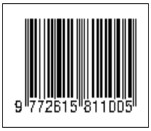ANALISIS KEMAMPUAN MEMAHAMI MASALAH MATEMATIKA PADA SOAL CERITA DITINJAU DARI GAYA BERPIKIR SEKUENSIAL KONKRET
Abstract
Keywords
Full Text:
PDFReferences
Amalia, S.R. (2017). Analisis Kesalahan Berdasarkan Prosedur Newman Dalam Menyelesaikan Soal Cerita Ditinjau Dari Gaya Kognitif Mahasiswa. Jurnal Aksioma. 8(1).
Argarini, D.F. (2018). Analisis pemecahan masalah berbasis Polya pada materi perkalian vektor ditinjau dari gaya belajar. Jurnal Matematika dan Pembelajaran, 6(1).
Azizah, at al. 2019. Kemampuan pemecahan masalah matematika siswa pada materi peluang berdasarkan self regulated learning (S-RL). Jurnal Review Pembelajaran Matematika, 4(1).
Clougherty, Bob. (2012) Learning A Matter of Style, tersedia di http://iweb.tntech.edu/rclougherty/.
Departemen Pendidikan Nasional. (2006). Standar Isi Mata Pelajaran Matematika SMP/MTs. Jakarta: Depdiknas.
Deporter., B., & Hernacki, M. 2000. Quantum Learning. Bandung: Kaifa PT Mizan Pustaka.
Farida, N. (2017). Analisis Kesalahan Siswa SMP Kelas VIII Dalam Menyelesaikan Masalah Soal Cerita Matematika. Jurnal Pendidikan Matematika PKIP Universitas Muhammadiyah Metro. 4(2).
Hikma, Sudia, M., Sahidim, L. (2021). Analisis Kemampuan Pemecahan Masalah Matematis Siswa Kelas VII SMP Negeri 9 Kendari. Jurnal Penelitian Pendidikan Matematika Volume. 9 No. 1.
Layn, M.R, Kahar, M.S,.(2017). Analisis Kesalahan Siswa Dalam Menyelesaikan Soal Cerita. Jurnal Math Educator Nusantara. Vol 03, No. 02.
Ilmiyana. M. (2018). Analisis kemampuan pemecahan masalah matematis siswa SMA ditinjau dari tipe kepribadian dimensi Myer Briggs Type Indicator (MBTI).
Nugraham, A., & Zanthy. (2019). Analisis kemampuan pemecahan masalah siswa SMA pada materi sistem persamaan linear. Journal On Education, 1(2).
Nursafa’at, F.A. dkk. (2016). Analisis Kesalahan Siswa Dalam Menyelesaikan Soal Cerita Pada Materi Volume Prisma Dengan Fong’s Shcematic Model For Error Analysis Ditinjau Dari Gaya Kognitif Siswa. Jurnal Elektronik Pembelajaran Matematika, 4(2).
Pazzani, M. J. (1991). Influence of Prior Knowledge on Concept Acquisition: Experimental and Computational Results. Journal of Experimental Psychology, 17(3).
Pujiastuti, H., et.al. (2014). Inquiry Co-operation Model for Enhancing Junior High School Students' Mathematical Problem-Solving Ability. International Journal of Contemporary Educational Research (IJCER), 1(1), 51-60.
Rahayu, D.V., & Afriansyah. (2015). Meningkatkan kemampuan pemecahan masalah matematik siswa melalui model pembelajaran pelangi matematika. Jurnal Pendidikan Matematika, 5(1).
Rahmawati, D., & Permata, L.D. (2018). Analisis Kesalahan Siswa Dalam Menyelesaikan Soal Cerits Progran Linear Dengan Prosedur Newman. Jurnal Elektronik Pembelajaran Matematika, 5(2).
Siregar, N.F. (2019). Analisis Kesalahan Siswa Dalam Menyelesaikan Soal Matematika. Jurnal Ilmu-Ilmu Pendidikan dan Sains, 7(1).
Sugiyono. (2014). Metode Penelitian Pendidikan Pendekatan Kuantitatif,. Kualitatif, dan R&D. Bandung: Alfabeta.
Winarmi, E,S dan Sri. H (2011). Matematika untuk PGSD. Bandung: Remaja Rosdakrya.
DOI: https://doi.org/10.35327/gara.v17i4.670
Refbacks
- There are currently no refbacks.
Copyright (c) 2023 GANEC SWARA

This work is licensed under a Creative Commons Attribution-ShareAlike 4.0 International License.
TERINDEKS
|
_______________________________
Ganec Swara
Published by UNMAS Denpasar K. Mataram |
Email: ganecswara@gmail com; aminullahmtk@gmail.com

This work is licensed under a Creative Commons Attribution-ShareAlike 4.0 International License.











